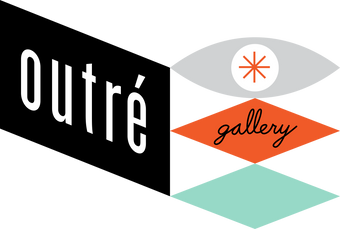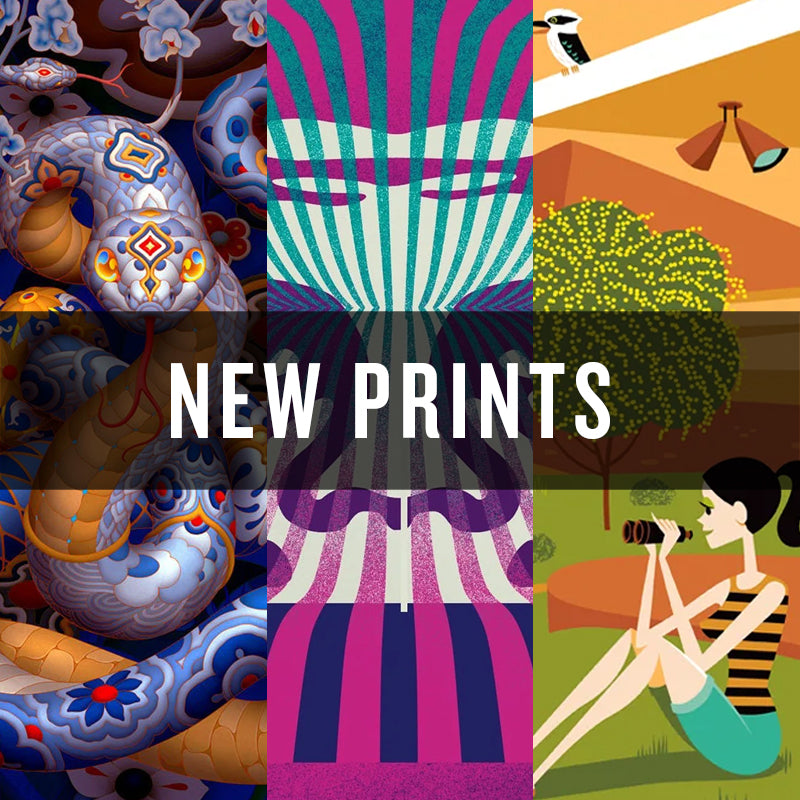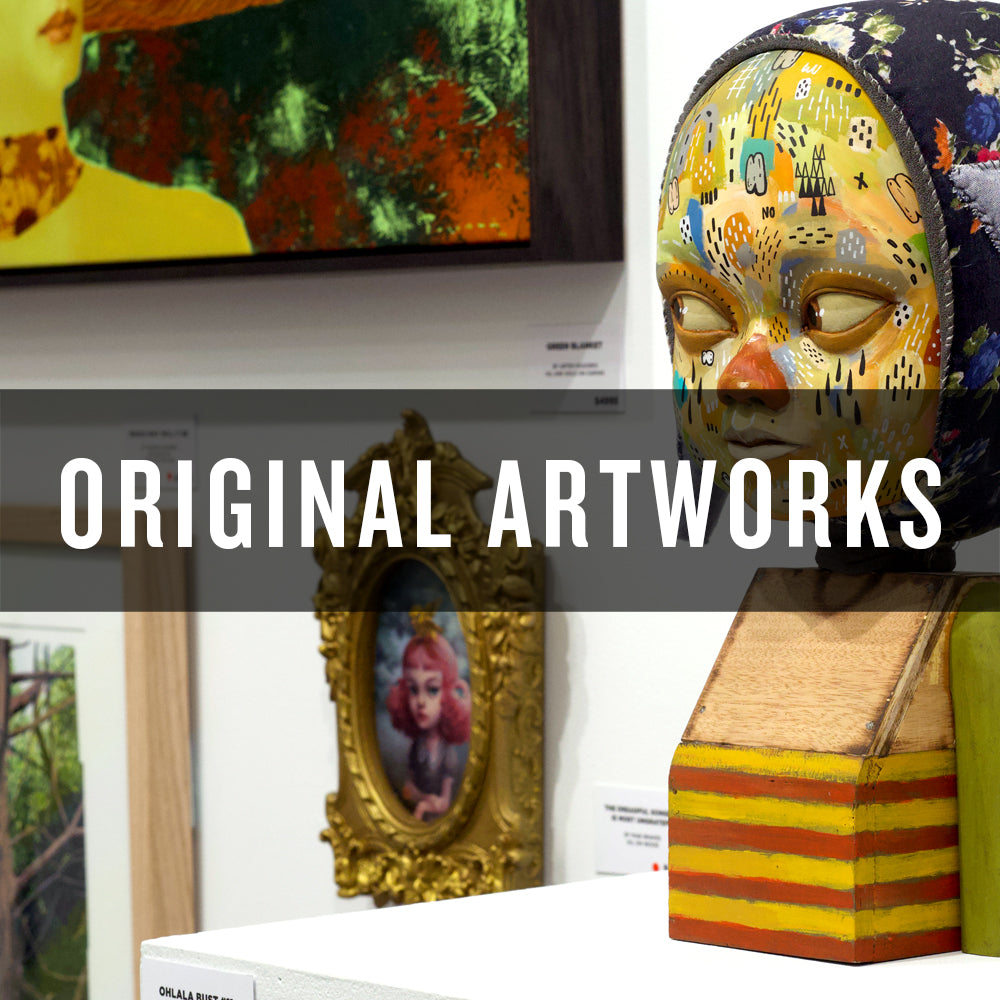
Kentaro Yoshida was born and raised in a rural fishing village in Toyama, Japan. At the age of 18, Kentaro decided to move to Australia in pursuit of the English language, sunny beaches and a more balanced lifestyle. After a decade, he is now an illustrator and artist, and is currently based in the Northern Beaches of Sydney. Kentaro is passionate about both traditional and digital mediums. Kentaro's pastel toned artwork has bold line-work, quirky characters, and a beach-side sense of humour. He has worked with various international brands, as well as individuals for private commissions. Kentaro also specialises in hand-painting artwork from large-scale murals, to detailed painting on fragile watercolour paper.
Interview by Viet-My Bui. Photography by Chris Grundy.
Please share with us the origins of your art journey. Were you always an artistic person? Did you study art/design?
My mom is a glass artist who has had her own studio for last 30 years in my home town. I used to hang out at her studio when I was kid. I was drawing, playing with clay and watching how she made her artwork. Since then I have been drawing, but never took art as a serious subject back then. Then I moved to Australia when I was 18 to study English. After language school, I chose Visual Communication at UTS as my area of study and took art/design little bit more seriously.

You grew up in a little fishing village in Japan, and now you live on the Northern Beaches of Sydney. What draws you to the water and how does it affect your lifestyle/practice?
Although I was born and grew up around the ocean, I didn’t really care about it when I was kid over there. It's because there is no beach or coastal culture in my home town, compared to Australia. Also my home town has a lot of snow during winter so we only hang around the beach and ocean during summer. I think I find myself feeling good around the ocean and have been enjoying coastal life since I moved here. I also started surfing here and it means a lot to me. Whenever I had to make a decision – either staying in this country or going back home – I always tried to stick around here. I just wanted to surf and hang around in Northern beaches, just as simple as that. I went through a hard time with visa issues, but now we all are good. I think I enjoy my lifestyle here and interacting, observing, and participating with the environment surround me.
You moved to Australia as an 18-year-old. What was that transition like for you? How did you begin to put your art out there?
Transition was crazy as I couldn’t speak English at all, also I am from country side of Japan, too. But at the same time, everything was so fresh and I just enjoyed living by myself and moving out of home, like any other teenager does. In my early 20s, I studied design and did a lot of painting on my friends' surfboards, but never took art/illustration as serious career until just before I turned 30.

You have said that manga was, and continues to be, a huge influence for you. What did you love about manga as a child? What inspiration do you get from it now? What are some of your favourite manga?
Just like many Japanese kids, I loved manga so much. I guess it's more like our culture now anyway. I went down to the shops every week to buy or read a bunch of weekly manga magazines. And I drew a lot of characters from manga at mom’s studio all the time. Manga often has bold and clean line drawing, therefore I like drawing line work. It's quite obvious, I guess. And that’s the only way I can draw too. I have so many favourite manga, but if I pick one it has to be CROWS by Hiroshi Takahashi. It's a story about Suzuran High School, where only bad boys are at school and everyone wants to be at the top. Each character has unique hair style and fashion, which was another reason why I loved it.
Skulls and skeletons feature prominently in your work. Why is that?
In the manga CROWS there is a motorcycle gang called BUSO-SENSEN. Their costumes are always leather jacket and pants, with skull embroidery or paint on the back of their jackets. I drew them on my textbooks all the time during high school and ever since then I have drawn skeletons. I also found and fell in love with the work of Ben Brown from Sydney, and Jeremy Fish from San Francisco, while I was studying at uni. I was really inspired by what these guys do. That may be another reason why I started drawing skulls. It's just one of my characters now, so I would like to keep on drawing and see how it grows.

I read that you recently moved out of your tiny YOSHIDA studio into a different space. What is the new workspace like?
My previous work space was just a small sun room of unit I rented and I liked that space. But I found it was too small for me eventually, and moved out. Now I've set up a new studio space in the lock-up garage of my new apartment. I painted all the walls to be white, built shelves for my surfboard and built a wetsuit rack for myself. I have settled into this studio. I still want to add more character and personality to my new studio, but for now I am pretty happy with it. I enjoy having friends and guests here and having beers together, and talking about work, drawing and surfing.

What keeps you busy outside of your art?
I try to surf as much as I can, so I surf once or twice almost every day. Otherwise having beers with my mates and wife. Also hanging out with my daughter is my new favourite thing to do.
Congratulations on recently becoming a father! How do you think fatherhood will affect your work routine and general lifestyle?
It’s a great experience. It did give us a bit of hard time, and there were time constraints for work at first, but it has all worked out and I'm gaining way more priceless experience and memories. As my wife supports me a lot, I can go surfing, hang out with my mates, and go and check out exhibitions and parties. I cannot thank her enough. These routines and activities are important for my inspiration and I believe it helps convincing my artwork too. Some people say my work has become a bit softer and warm due to the simplified line work and my own pastel colour palette. It may come from these life changes, but I am not sure. I will keep going with flow.

You have an upcoming show with Outré called Permanent Holiday. Can you tell us about the concept behind your body of work for the show?
I have learnt so many things in Australia, and the ‘holiday’ culture is one of them for sure. You might not believe it, but there is no such culture in Japan. Japanese people are always working overtime and many cannot even take time off work. That causes a lot of issues, like depression, stress, physical and mental exhaustion. Many Japanese do not even have time to spend with their family, or do things they enjoy. Some Japanese might say I am wrong, but that is how I felt after I moved out of Japan and observed my country from the outside.
I like living in Australia now, and I like the people here and their attitude to life. I have learnt how I roll my life, how I like to keep doing things I like, through living in Australia for last 15 years. For me, the time I have spent in Australia can be seen as a ‘holiday’ because it's been such a surreal experience since I left Japan. Also it is where my life direction has changed and I've become sort of brainwashed in a positive way. Now I have family here and I want them to grow in this brilliant country, so I've decided to live here for good – which can be my ‘Permanent Holiday’. That is why I decided on ‘Permanent Holiday’ as the title of exhibition. I wanted to explore something fun and quirky but still communicating my perspective and experiences. I also wanted to focus more on coastal life and ocean experiences as a motif and message, as I have never focused on ocean themes for a solo show, surprisingly. I hope people can get my weird but quirky and funny (hopefully) execution and idea.

Where do you see your art going in the future? Would you consider exploring other avenues, like making toys or sculpture?
I think I want to do a few shows this year and not take each show too seriously, like my past solo shows, and just have fun making artwork that I feel like. I am really considering making a book and I have a couple of ideas I really want to do. At the moment not so much 3D work. Working on larger paintings and getting more physical painting done, and less commercial work, is a good start for where I am going this year.
I am also working on putting an art show together in Japan sometime this year so, hopefully it will be all good, too.

Thank you for your time, Kentaro! We can't wait to see your depictions of your newfound 'holiday' lifestyle.



